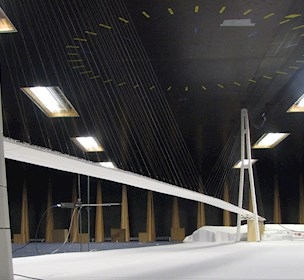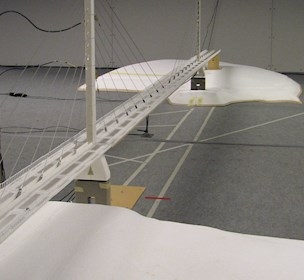Test of new concept to minimise oscillating bridge cables and falling ice
A new concept for surface modification of cable ducts designed for the new Champlain Bridge in Montreal, Canada, has been tested in our climatic wind tunnel.
New concept with rings on cable duct
Oscillating bridge cables and falling ice, leading to damages and bridge closures, continue to challenge bridge designers and owners around the world. Different approaches have been taken to deal with the problems, which are caused by various weather conditions such as wind, rain, ice and snow.
By modifying the surface of the bridge cable, i.e. the high-density polyethylene sheet covering the steel cable, it is possible to improve the aerodynamic performance and change the way water behaves and ice accretion builds up on the bridge cable surface.
The aim is to mitigate rain-wind induced vibrations, vibrations due to ice accretion and limit the impact of falling ice, while maintaining a good aerodynamic performance in terms of aerodynamic stability and low drag.
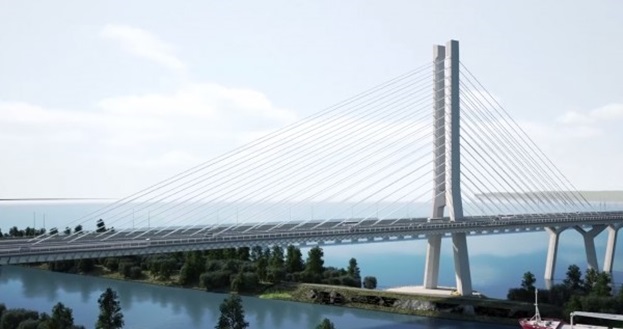
Testing under various weather conditions in climatic wind tunnel
In the present study, a new concept within surface modification of cable ducts was assessed by evaluating the aerodynamic performance of the bridge cables designed for the new Champlain Bridge in Montreal, Canada.
This new concept consisted of equipping the cable ducts with 10 mm rings spaced equally along the length of the cable. We tested the cable ducts in our climatic wind tunnel under various weather conditions: dry (no rain or ice), rain, rime ice, mixed ice, freezing rain.
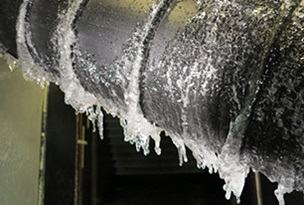
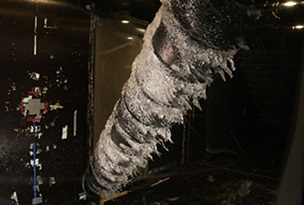
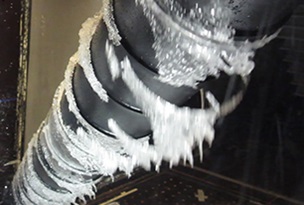
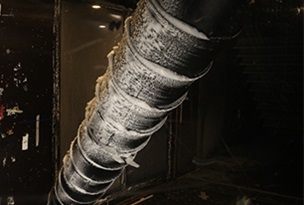
How does the new concept compare?
The outcome of the study consisted of detailed measuring of aerodynamic load coefficients (drag and lift), estimation of aerodynamic damping and description of ice accretion characteristics and de-icing process for various inclination angles and wind directions.
The new concept was compared to a traditional cable duct with double helical fillets, which is widely used on bridges around the world. The data from the comparison will be used in the customers own evaluation.<

